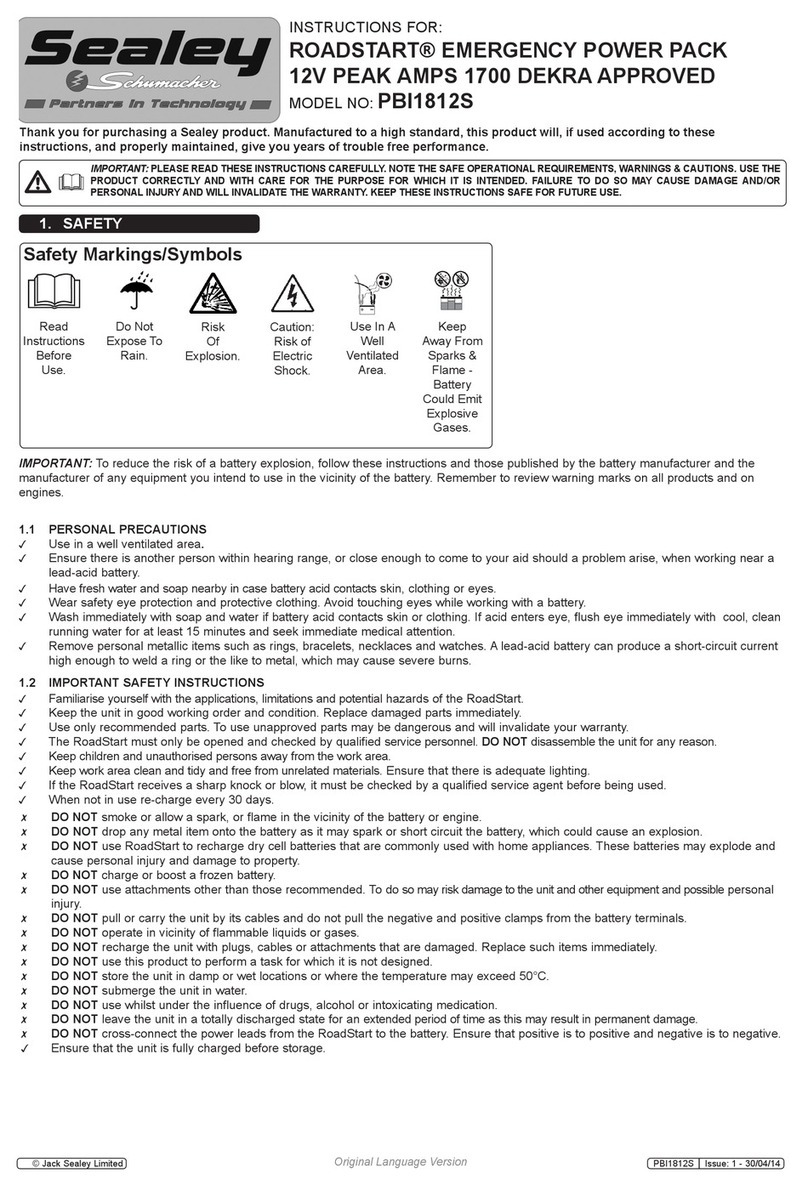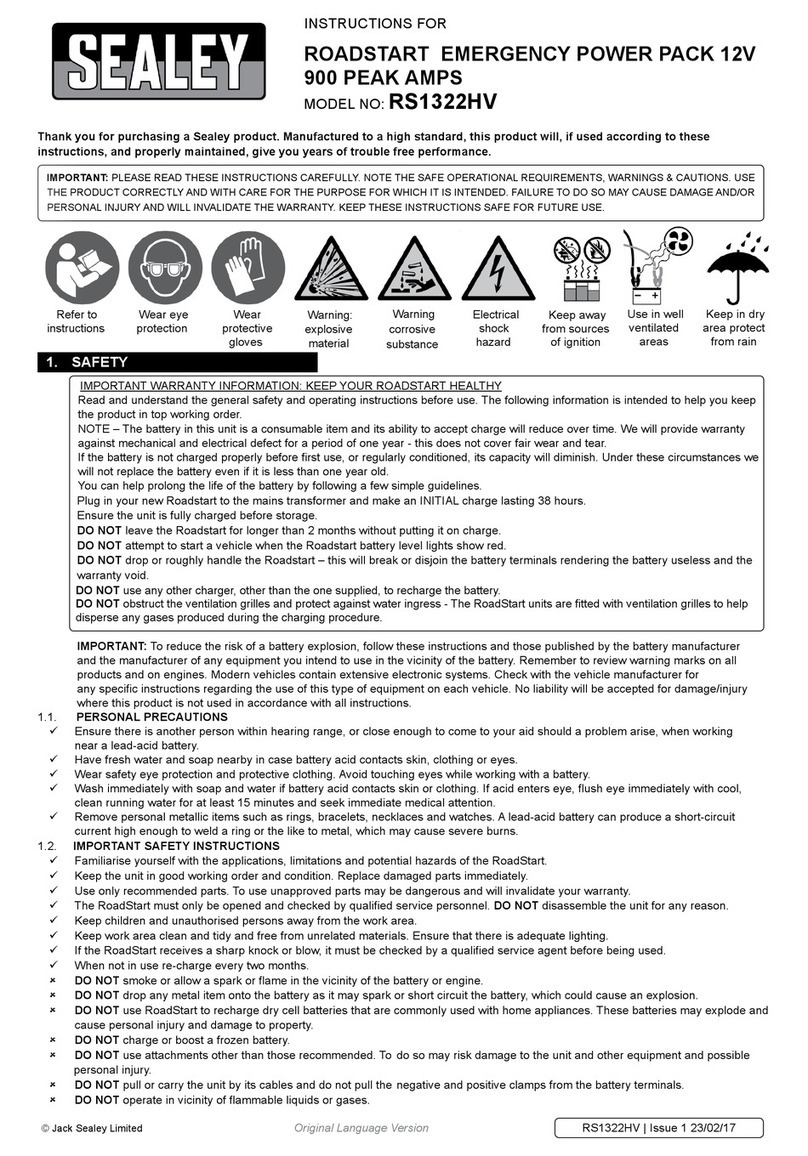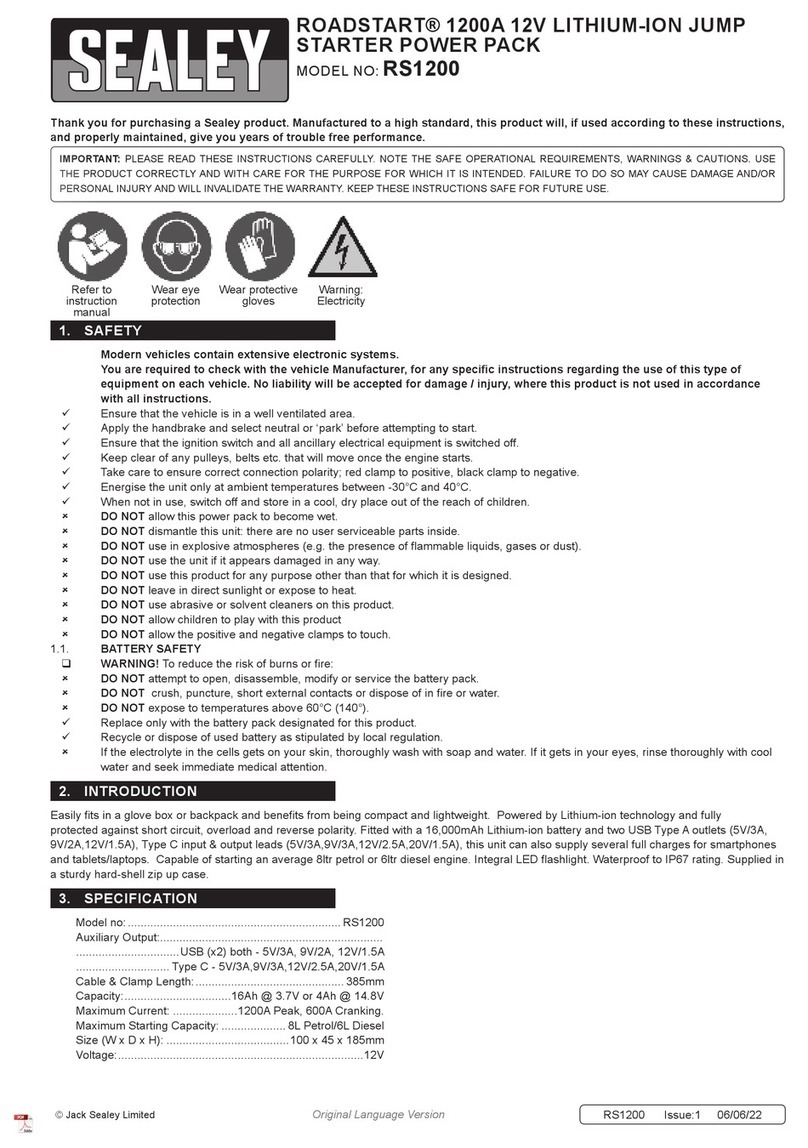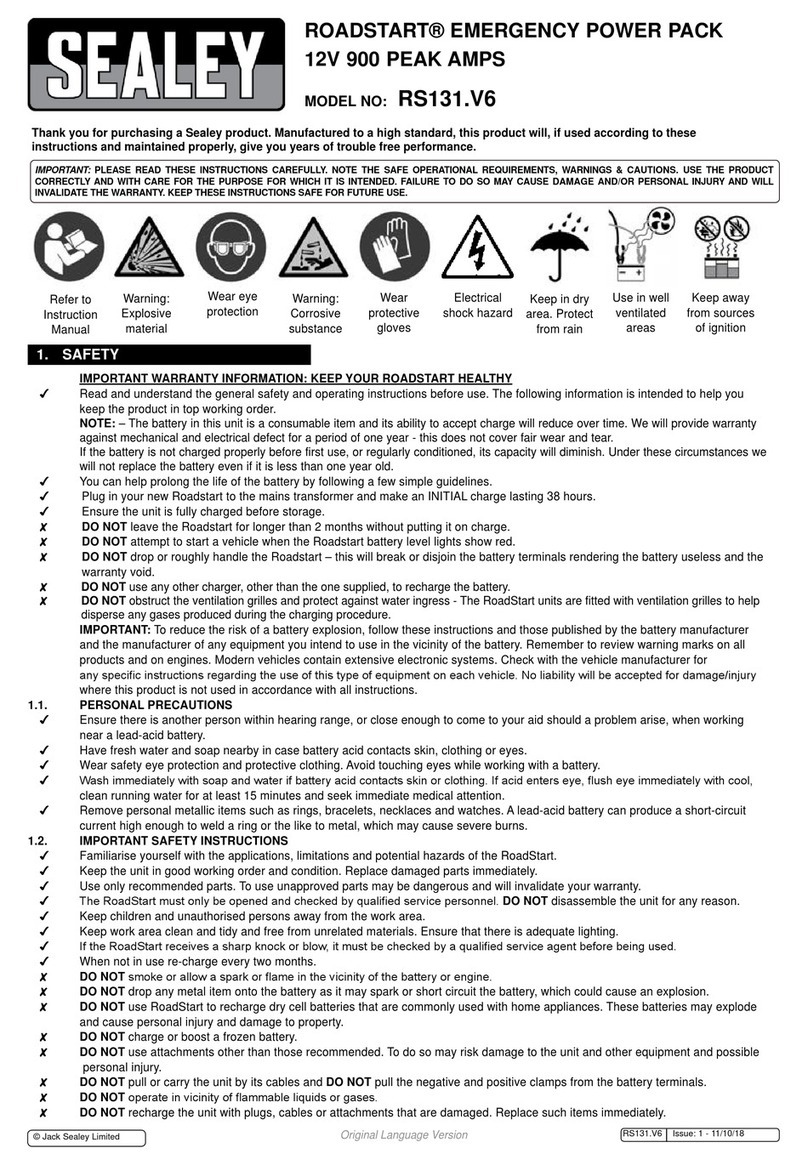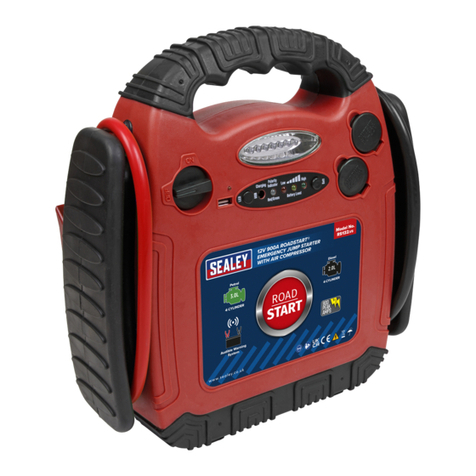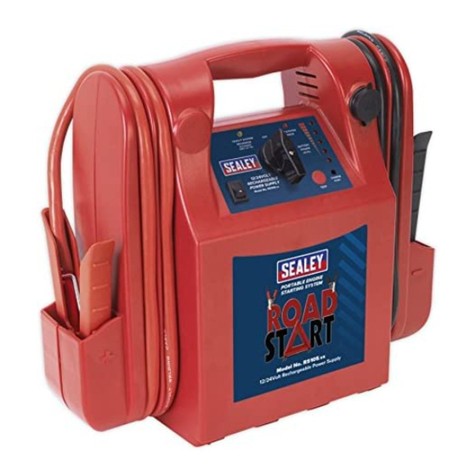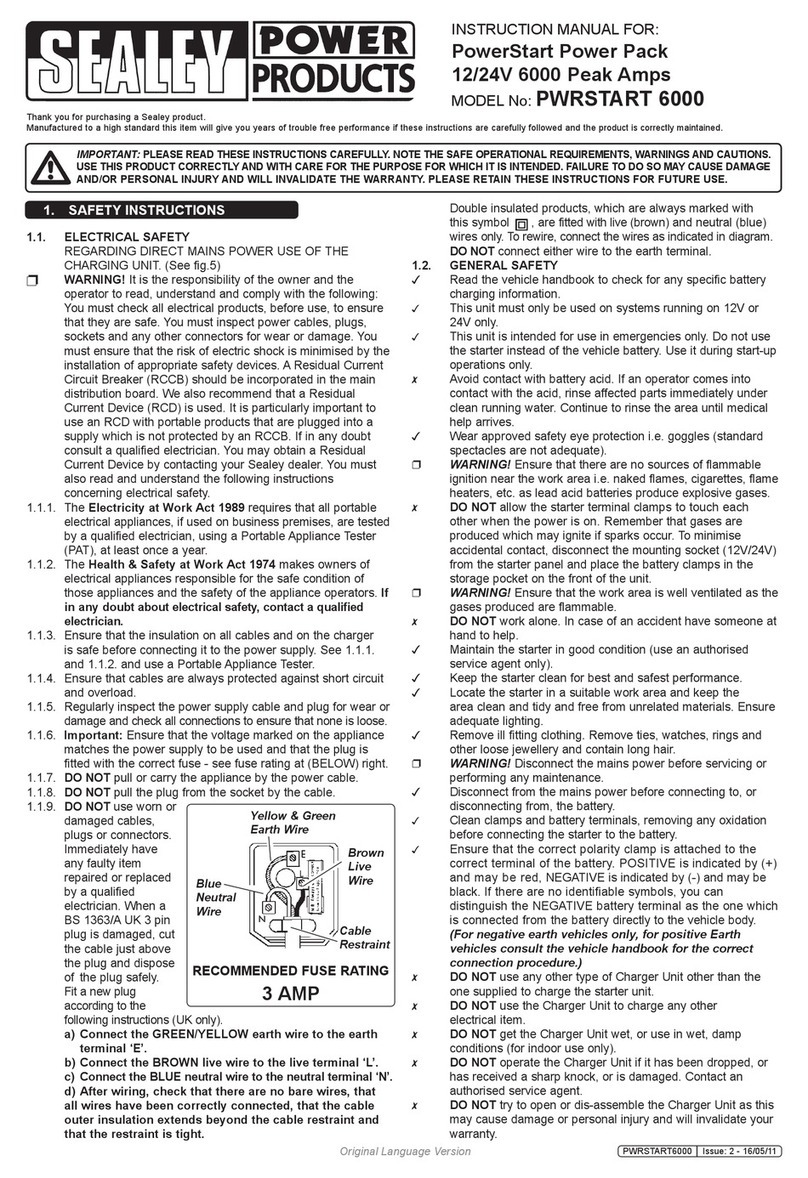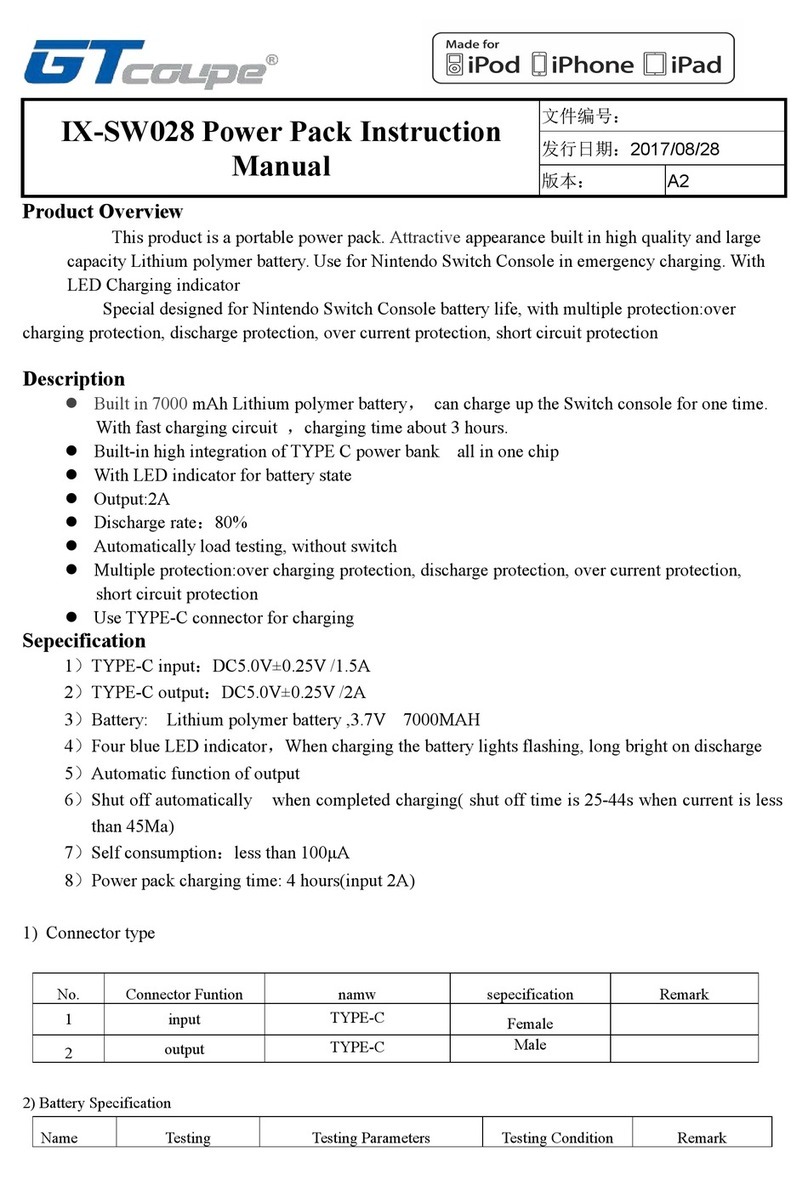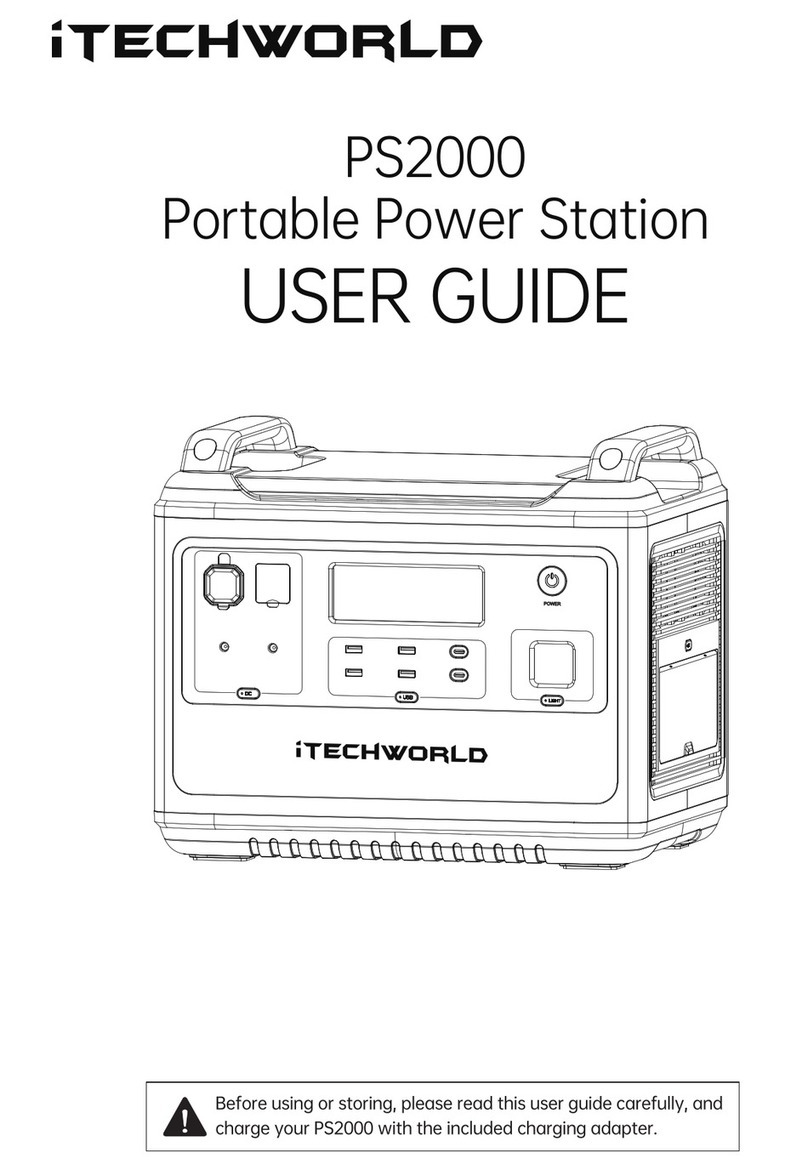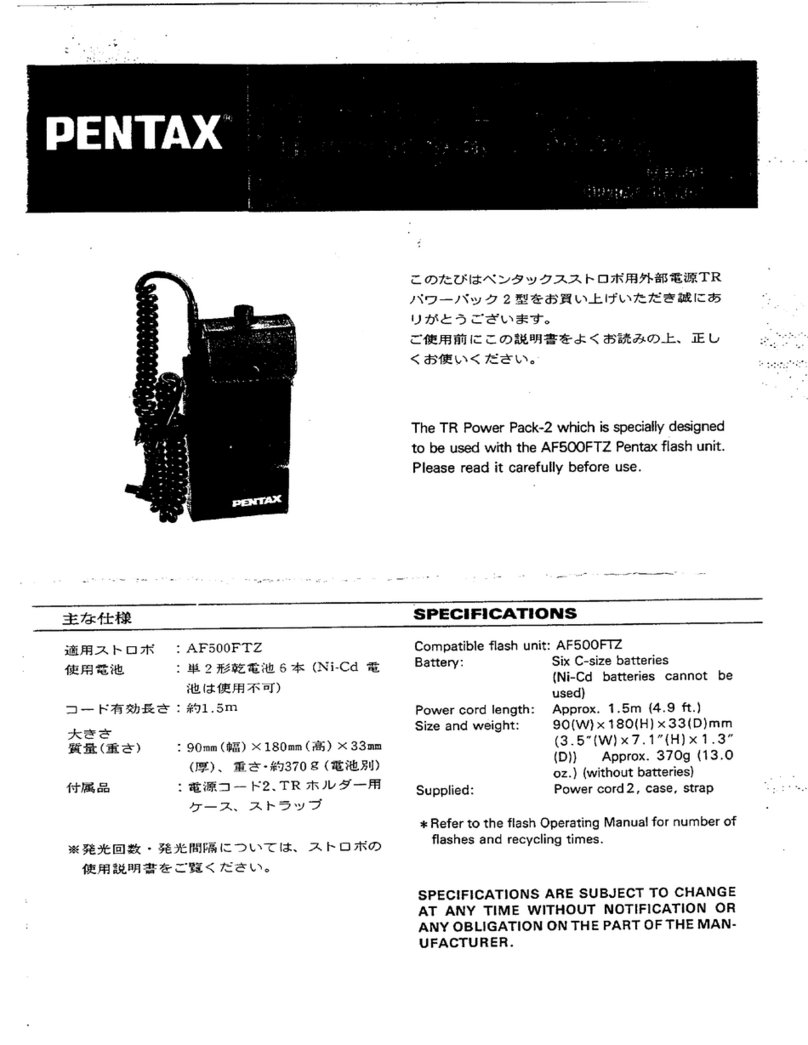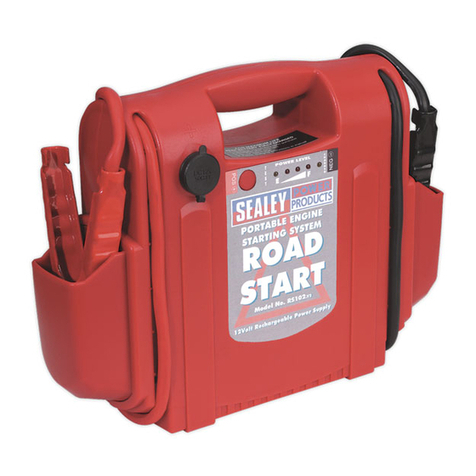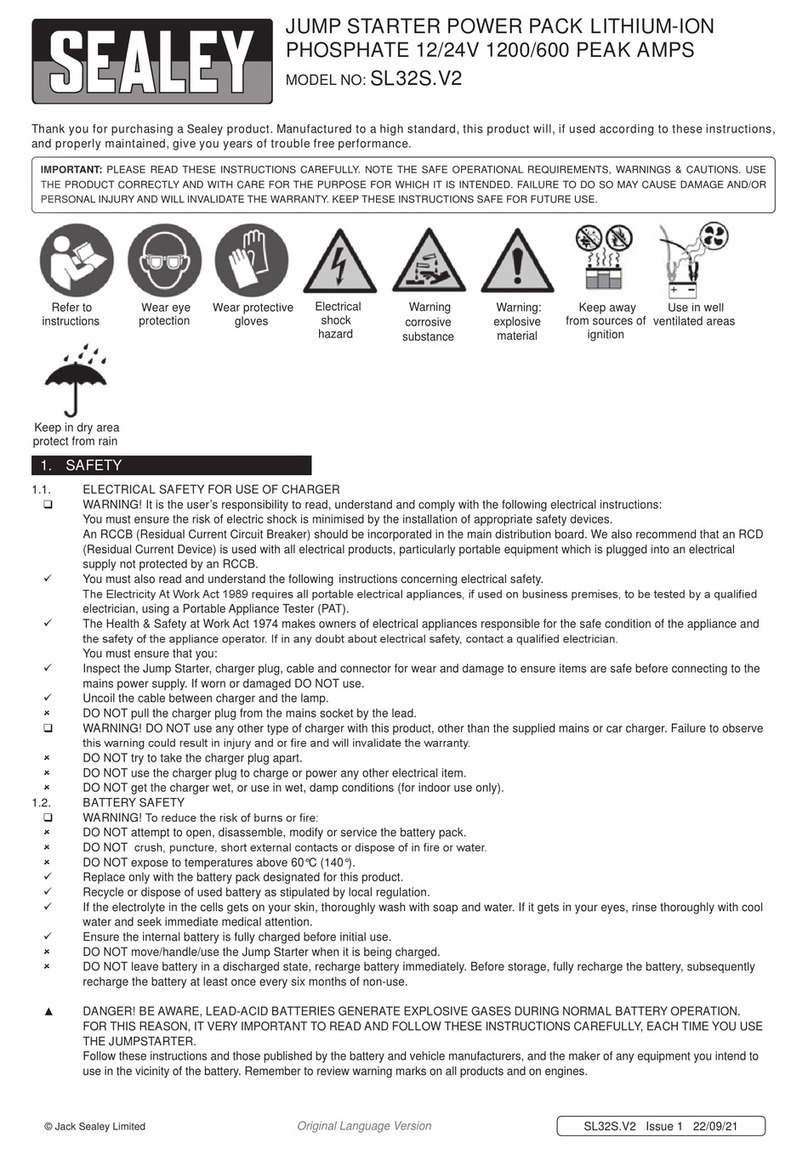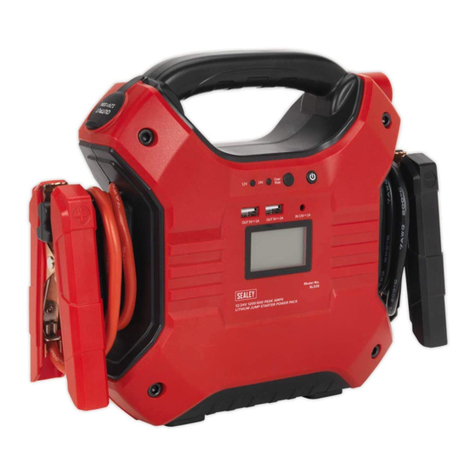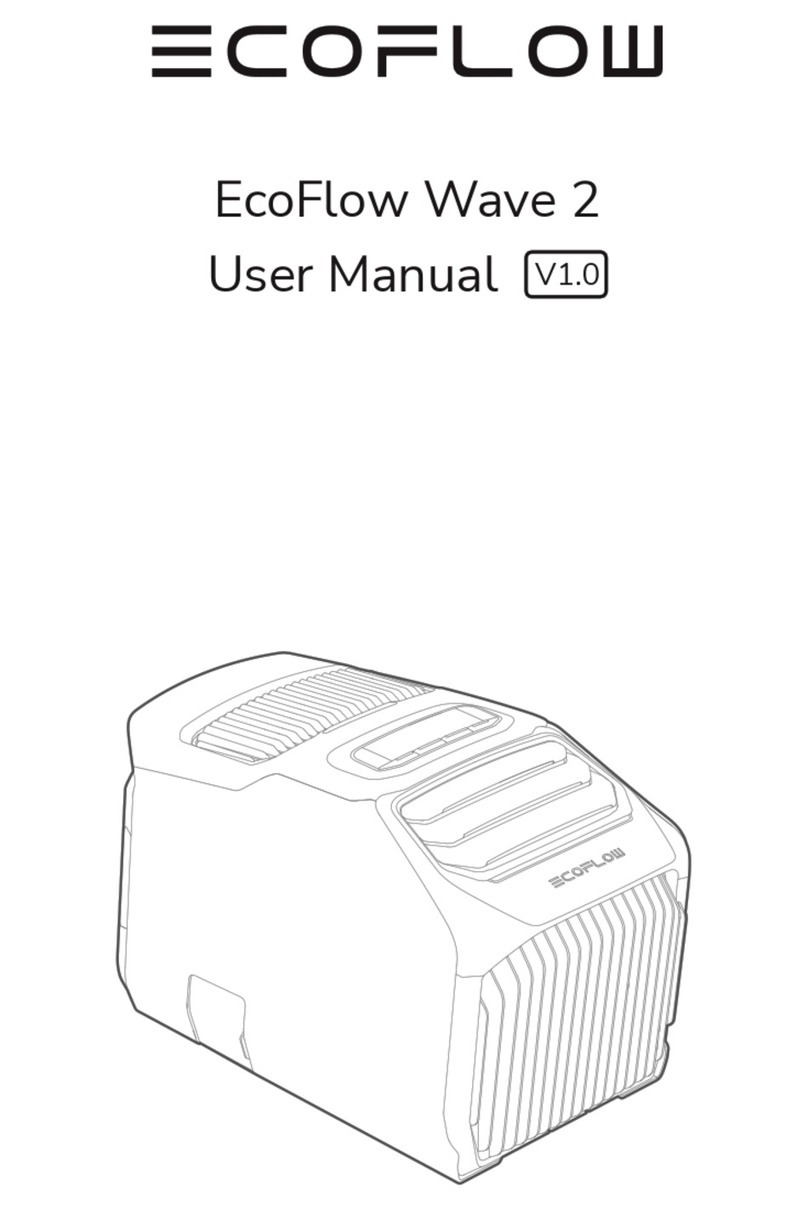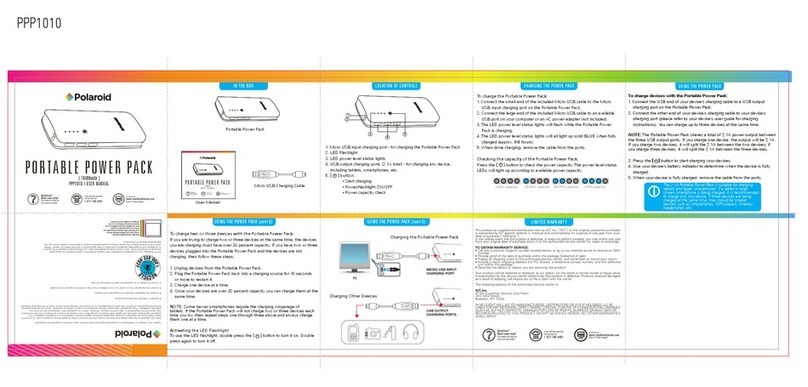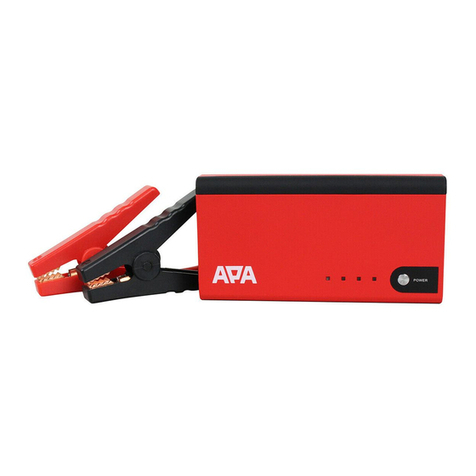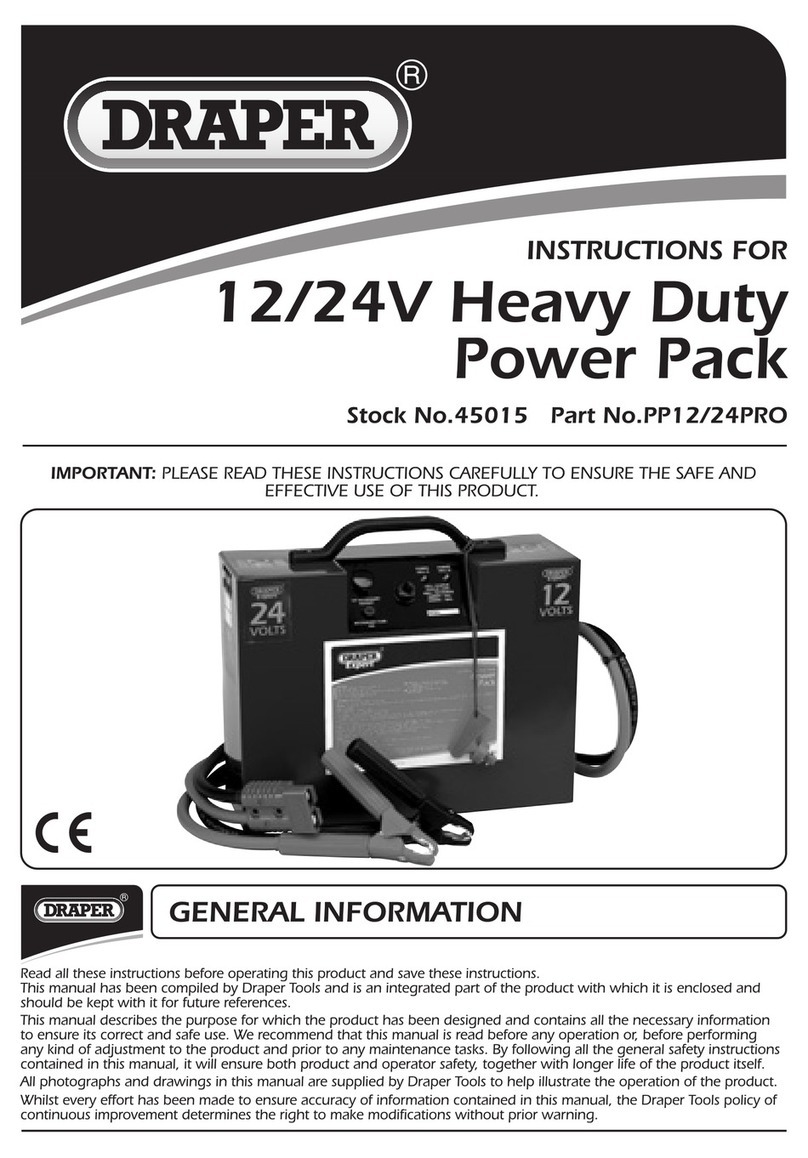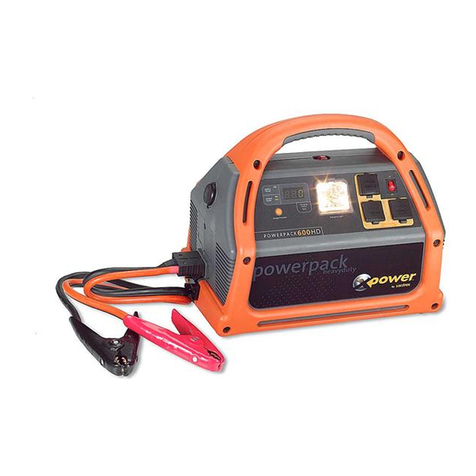
6. OPERATION
6.1. PREPARATION AND PRECAUTIONS
RWARNING!ENSURE THAT THE ROADSTART AND VEHICLE VOLTAGES ARE THE SAME.
6.1.1. Apply the vehicle hand brake and place in neutral gear (or “Park” if automatic transmission).
Turn ignition and electrical accessories off.
6.1.2. Use in a well ventilated area and wear protective eye shields and clothing.
RWARNING!DO NOT allow the red and black clamps to touch each other. Ensure that the correct clamps are placed on the
correct battery terminals. Observe the Polarity Indication on the control panel, see g.5 If the dual colour LED is green
the connection is correct. If the LED is red DO NOT proceed until the connections are correct.
NOTE:A defective battery may not accept a charge from the portable power source. Ensure that the engine is functioning
and that the vehicle battery is not damaged.
RWARNING!Vehicles equipped with on board computers may be affected if the engine battery is jump started. Read your vehicle
owner’s manual before attempting to start the vehicle to determine if external starting assistance can be used.
Failure to follow these instructions may cause damage or explosion.
NOTE:For optimum performance, the unit should not be stored below 10°Cwhen using the unit as a jump starter.
6.1.3. Turn off the vehicle ignition.
6.1.4. Determine whether your vehicle uses a negative or a positive earthing system. If you are unsure refer to the owners manual
provided with the vehicle.
6.1.5. Negative earthing - The negative battery terminal is grounded to the vehicle’s chassis. Most vehicles use this system.
6.1.6. Positive earthing - The positive battery terminal is grounded to the vehicle’s chassis.
6.2. CONNECTIONS FOR NEGATIVE EARTHED VEHICLE
6.2.1. Ensure side switch is in the off position.
6.2.2. Attach the RED (positive +) clamp to the positive terminal of the battery.
Note: On vehicles with multiple batteries connect positive clamp to positive battery terminal which is connected to vehicle
electrical system.
6.2.3. Attach the BLACK (negative -) clamp to the vehicle chassis, engine block or a non-moving metal part of the vehicle which is
veried to be grounded, as far away from the battery as possible. DO NOT clamp directly to the negative battery terminal,
carburettor, fuel lines, or sheet metal body parts.
6.3. OPERATION
6.3.1. Disconnect any accessories plugged into the 12V power outlet.
RWARNING!DO NOT place the unit where it will become unstable when the engine starts. Route power cables away from moving
parts such as fans and belts.
6.3.2. Press the battery check button. If the green lights do not illuminate the unit must be charged before it can be used for jump starting.
6.3.3. Ensure that all cables are clear of moving belts and rotating fans.
6.3.4. Turn the side switch to the ON position.
6.3.5. Maintain a safe distance from the battery whilst jump starting.
6.3.6. Turn on the ignition to start the vehicle.
NOTE:If the vehicle does not start after 4 to 5 seconds, allow the RoadStart unit to cool for 3 to 4 minutes, before attempting to
jump start the vehicle again. If this is not done, the unit could sustain damage.
DANGER OF EXPLOSION,WHICH COULD RESULTIN DAMAGE OR INJURY IF THE FOLLOWING INSTRUCTIONS ARE NOT
OBSERVED.
6.3.7. When the vehicle has started, disconnect the negative (-) black clamp (negative earthed vehicles) or red (+) positive (positive
earthed vehicles) within 15 seconds
6.3.8. Turn the rotary switch to OFF.
6.3.9. Disconnect the positive (+) red clamp negative earthed vehicles or black negative clamp (-) on positive earthed vehicles.
6.3.10. Return the clamps to the mounting bars at the back of the casing.
6.3.11. Recharge the unit at the rst available opportunity.
6.4. ALTERNATIVEVEHICLE POWER SUPPLY
6.4.1. When a vehicle battery is disconnected, the memory systems in radios, electronic ignition systems and alarms are frequently lost.
6.4.2. When replacing a battery the RoadStart unit can be used as an alternative power supply by connecting a 12V DC extension
lead (not supplied) into an accessory socket. This will prevent loss of memory.
RWARNING!The vehicle positive battery cable will be live and MUST be insulated (e.g. in a heavy duty plastic bag).
6.5. MULTI-PURPOSE POWER SUPPLY
6.5.1. This RoadStart unit can be used as a multi-purpose power supply to power up any equipment which can connect via a 12V DC
plug (17amp maximum) or 5V 2.1Amp USB.
6.5.2. Activate the sockets by positioning the switch see g1. 9 & 10. The appliance operating time will depend on the state of charge of
the battery and the amount of current drawn by the appliance. Periodically check the battery status. If only the red light comes on
recharge the unit as soon as possible.
6.5.3. The socket is protected by a circuit breaker which will trip if the current exceeds 11Amps. After 15 to 20 minutes cooling time the
circuit breaker will automatically reset.
DO NOT plug a cigarette lighter into the socket on the unit.
6.6. USING THE WORKLIGHT
6.6.1. To turn the worklight ON and OFF, see g.1.5. If used on its own the light will operate for up to 40 hours on a fully charged battery.
Turn OFF light when not required to conserve battery power.
WARNING! YOU MUST FOLLOW THE SAFETY INSTRUCTIONS
Original Language Version
© Jack Sealey Limited RS131.V5 RS132.V3 | Issue 2 (H) 11/01/18
